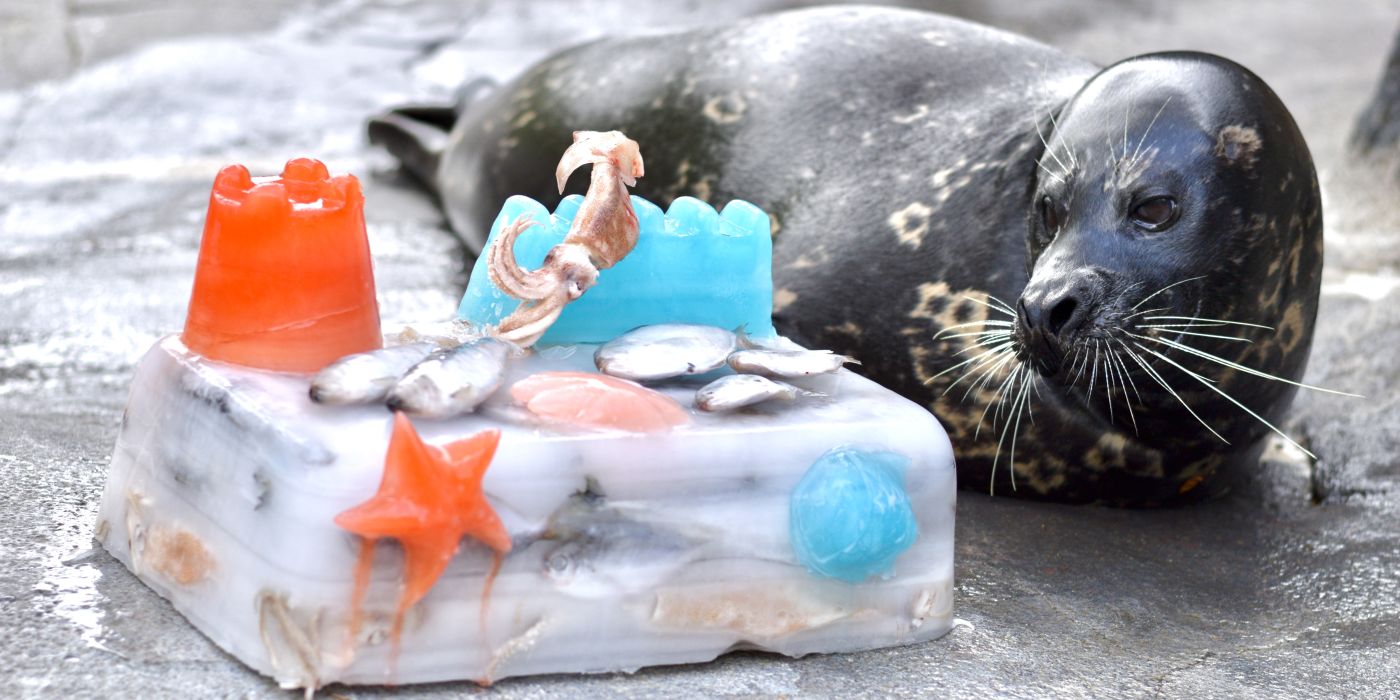Caring for Harbor Seals – Stories from a Real-life Zoo Guardian - Smithsonian's National Zoo and Conservation Biology Institute

When Rabbit does the correct behavior asked of him, we reward him with a portion of his diet. This is known as positive reinforcement, and it's a training technique used with many animals at the Zoo. While Rabbit is not very picky with food, his favorite is squid! Knowing this, he doesn't get it too often. Instead, squid is used for big-ticket behaviors, like voluntary injection training, which makes it an extra special treat to receive.
Rabbit also enjoys eating ice cubes! When we first presented them to him, we weren't expecting much. We have given our other seals a pile of ice cubes before, and they just dug through the pile to see if there was any fish buried inside. Rabbit surprised us when he started noshing on the ice cubes. Even without fish or squid, he seemed to enjoy the new treat!
Harbor seals will eat just about any fish they can get their flippers on in the wild. Here, we give them herring, capelin, butterfish, mackerel and squid. Our volunteers process about 200 pounds of fish every day; they help us inspect each fish for scrapes, missing parts or anything "off" in their appearance. Pinnipeds are susceptible to diseases their food can carry, so we only feed them the highest quality diet items!
Not every facility feeds their seals the same fish. When Rabbit came to us, we had to introduce him to some new types of fish. When he first received his new diet, he would look at it and wasn't sure what to do with it. Like with husbandry training, we used positive reinforcement to show him it was okay to eat. Now he eats all the fish we have with the rest of his diet!
Comments
Post a Comment